A classic appetiser, and one of my favourite gifts to give away come the festive season, this rich and smooth chicken liver pâté will elevate any charcuterie board.
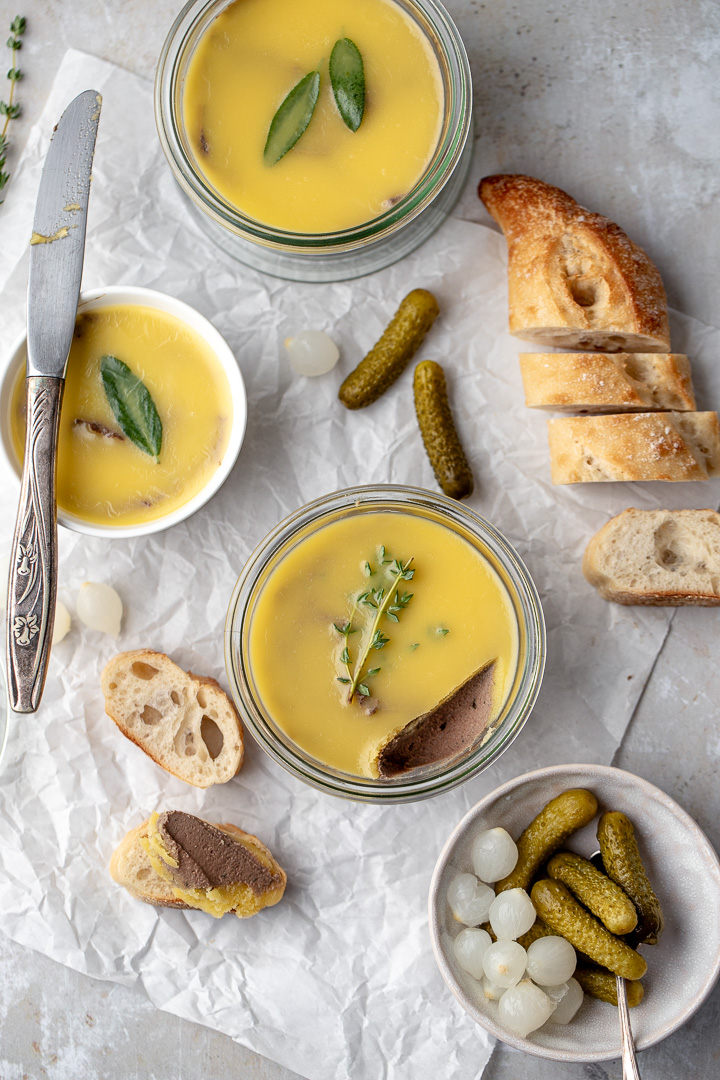
Pâté is a somewhat polarising delicacy, with people firmly in the love or loathe camps and no where in between. This stems from the primary ingredient, livers, which can be an acquired taste. Many simply find it difficult to stomach the idea of eating the organ whatsoever.
The origins of pâté
Pâté, derived from the French word for paste or pie, is a dish made by blending meat with fat, herbs and spices, cooking and puréeing it and typically serving it cold. Pâté can feature various main ingredients, ranging from chicken and duck to seafood or even vegetarian alternatives. Often served as an appetiser or hors d'oeuvre, accompanied by slices of crusty bread or crackers. Its versatility extends to both smooth and coarse textures, appealing to a diverse array of taste preferences.
Its origins can be traced back to ancient Rome, where liver-based dishes were considered a delicacy among the elite. As with many dishes, over time, pâté evolved and became more refined, with different variations arising from different European regions. Some common variations you may have heard of include pâté en croûte, where the pâté is baked in a pastry crust, pâté en terrine, a baked version or pâté de foie gras, made from the livers of fattened geese.
Offal
Offal, also known as the pluck, encompasses organs such as liver, heart, and kidneys. These ingredients both captivate and challenge palates across the globe. Historically, offal consumption dates back to ancient civilizations, where no part of an animal went to waste, and resourcefulness was key. Over time, offal became embedded in various cultural cuisines, celebrated for its nutritional richness and distinctive flavours.
However, despite its historical significance, offal remains a polarising component. The practice of consuming organs triggers debates over taste preferences, texture, and cultural perceptions. While some embrace offal as a celebration of nose-to-tail eating, others shy away due to unfamiliarity or the perceived intensity of flavours.
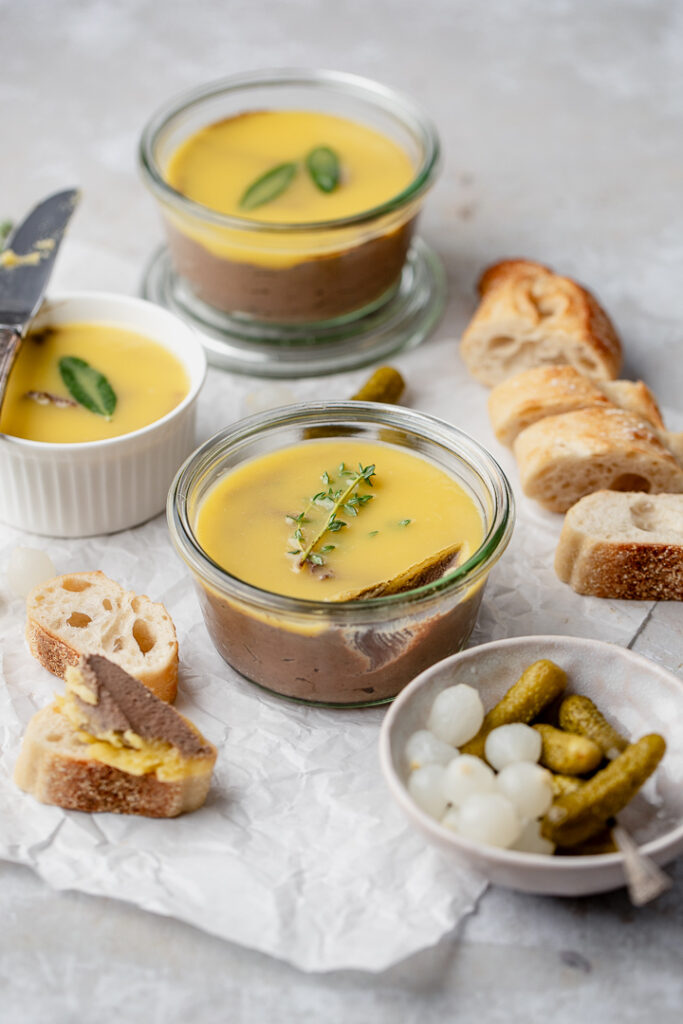
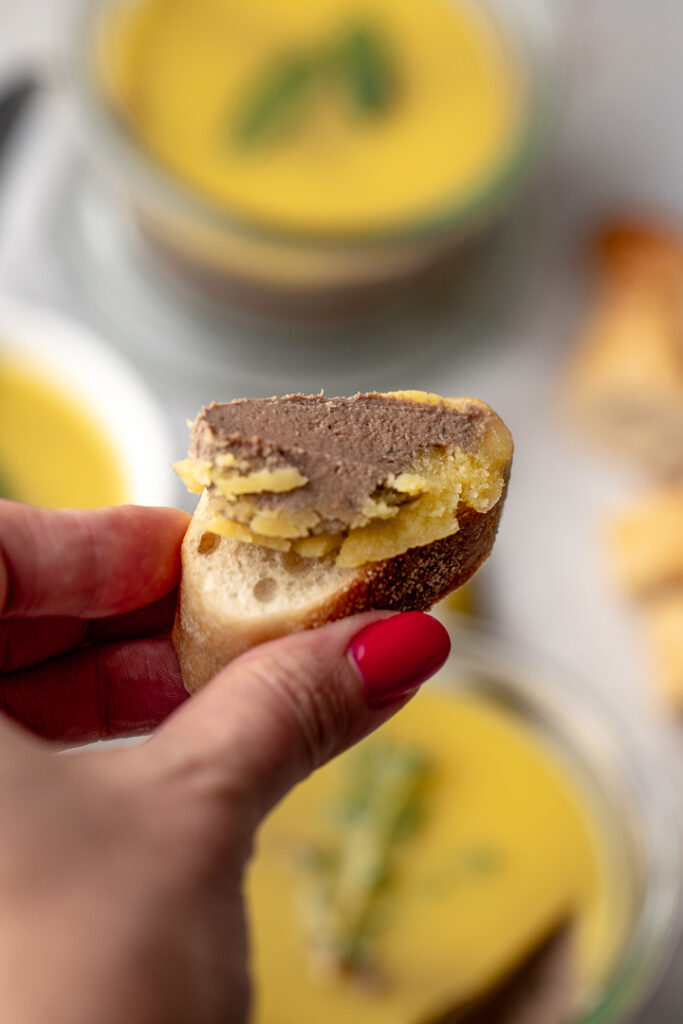
Nose-to-tail eating
Chicken liver pâté contributes to the concept of nose-to-tail eating, embodying a commitment to utilising every part of the animal. This practice pays homage to culinary traditions and champions sustainability by minimising food waste. Chicken liver in pâté transforms an often overlooked organ into a luxurious spread.
Beyond its role in culinary sustainability, chicken liver brings substantial nutritional benefits to the table. Packed with essential nutrients like iron, vitamin A, and B vitamins, liver is a bit of a powerhouse. Its nutrient density not only adds depth to the flavour profile of pâté but also contributes to the overall healthfulness of this classic dish.
Don't yuck my yum
Whether you find yourself in the love or loathe camp, I urge you to keep an open mind with this type of food. It's never tasteful to yuck anyone's yum, and while you may find it difficult to stomach the idea of consuming offal, many truly relish in the experience of being able to enjoy such a delicacy.
This chicken liver pâté also includes shallots, mushrooms and bacon, which contributes to the savoury richness of the dish. A splash of brandy or port (if you wish) and green peppercorns elevates this appetiser to the next level. If you are a fan of pâté, then you will love this homemade recipe.
I make a batch or two of chicken liver pâté every year around the festive season to gift to my friends and family for inclusion on the next charcuterie board. Serve it in a small glass container, topped with clarified butter for a delicious homemade gift.
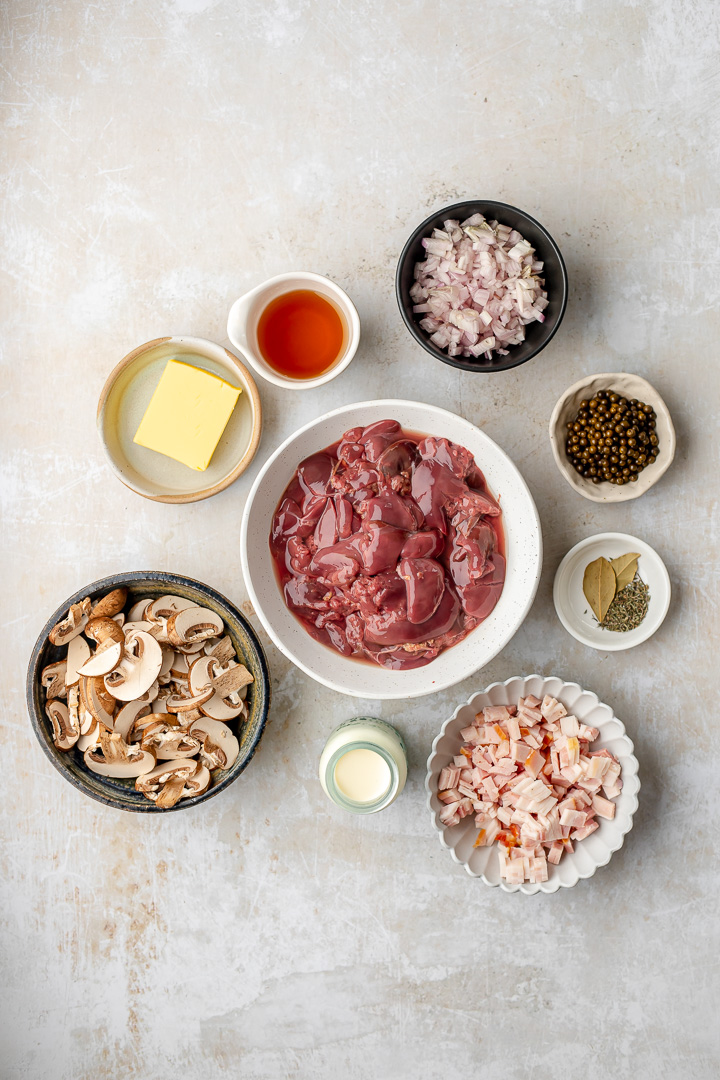
Ingredients
- Chicken livers
- Butter
- Shallots
- Mushrooms
- Bacon
- Thyme
- Bay leaf
- Brandy or port
- Cream
- Salt
- Tinned/jarred green peppercorns
- Fresh thyme or sage leaves
See recipe card below for quantities.
Tips and Variations
- In the case of chicken livers, use high quality, fresh produce. I encourage you to head to your local butcher to source this ingredient.
- Swap the thyme and bayleaf for 3-4 finely chopped sage leaves.
- Brandy (or port) can be omitted if you like, or swapped with whiskey or cognac.
- If you aren't able to find green peppercorns, leave out and season liberally with black pepper instead.
- Clarified butter topping is optional, or can be replaced with a chicken flavoured gelée.
Equipment
- Knife
- Chopping board
- Fry pan
- Spatula
- Food processor or blender
- Sieve
- Bowl
- Spoon
- Small glass jars or serving bowls
Watch the video here. If you make this one, don't forget to tag me on TikTok or Instagram. I love to see it!

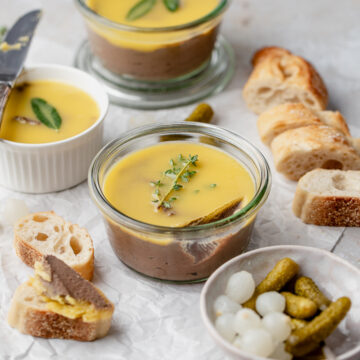
Chicken Liver Pâté
Ingredients
Pâté
- 500 g chicken livers trimmed and diced
- 60 g butter
- 80 g shallots diced
- 100 g mushrooms sliced
- 100 g bacon diced
- 1 teaspoon dried thyme
- 1 bayleaf
- 60 mL brandy or port
- 125 mL cream
- Salt to taste
- 30 g tinned/jarred green peppercorns drained
Clarified butter topping
- 80 g butter
- Fresh thyme sprig or sage leaves
Instructions
Pâté
- Rinse chicken livers under cold running water and drain, before patting dry with a paper towel.
- Melt butter in a fry pan over medium-high heat until it begins to foam. Add livers (do this in two batches if necessary), and cook for five minutes or so, until lightly browned on the outside and pink in the centre before removing from the pan.
- Add mushrooms and shallots and sauté for another three minutes. Add bacon and continue to cook until mushrooms and shallots have browned and softened. Sprinkle over thyme and bay leaves and stir through. Add cooked livers back in.
- Pour over brandy and simmer for a minute or so, until most of the liquid is evaporated. Remove pan from the heat and set aside to cool slightly.
- Place liver mixture into a food processor or blender and blend until smooth, scraping down the sides if necessary. Pour in cream slowly as it blends. Taste and season with salt. Run pâté through a sieve to remove any large lumps. Add in green peppercorns and stir through gently to disperse.
- Divide pâté among smaller dishes (or one large dish) and smooth the surface. Cover and place into the fridge to chill.
Clarified butter topping
- Add butter to a pan and melt gently. Pour over a thin layer of butter on top of the pâté, leaving behind the milk solids. Arrange the fresh thyme leaves on top. Once the butter has set, wrap and refrigerate for 3-4 hours, or overnight before serving. Pâté will keep for up to five days in the fridge.
- Serve with toasted baguette slices or crackers, cornichons and pickled onions.



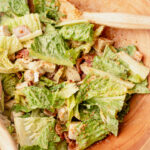


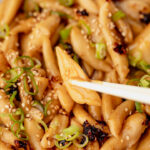

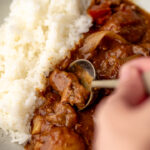
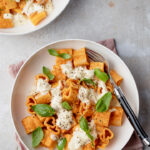




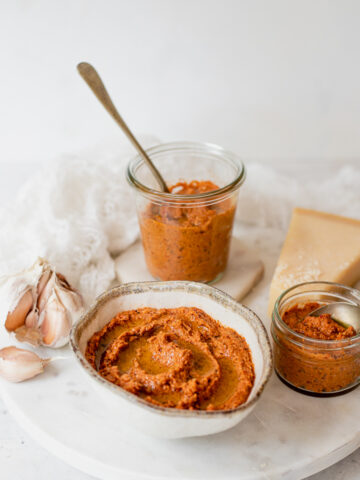
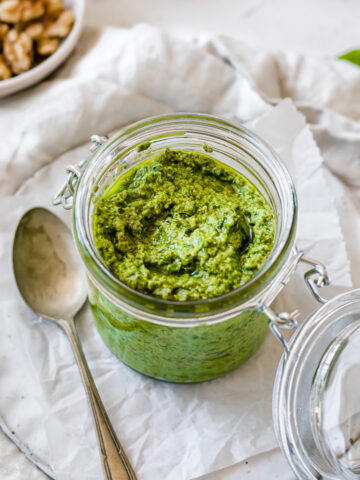
Anne says
You have added bacon to pate but it is not listed in the ingredients
Andrea Love says
Hi Anne, thanks so much for pointing this out! Have fixed the ingredients list now 🙂